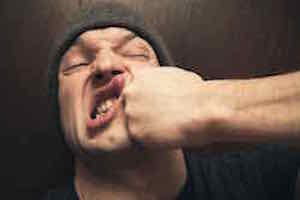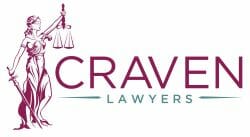ASSAULTS QLD
If you have been charged with an assault offence it is imperative to obtain advice from a criminal law expert. Our expert Brisbane criminal lawyers can assist in advising and representing you in relation to all types of assault offences.
Assaults can encompass a wide variety of circumstances ranging from a simple push in the chest to a punch in the face causing significant injuries. Below are some of the types of assault offences our criminal lawyers can assist in representing you with and the types of evidence that is often relied upon by the Prosecution.

1) The defendant assaulted the complainant.
Assault includes striking, touching, moving or otherwise applying force of any kind to a person either directly or indirectly without the other person’s consent.
(2) The assault was unlawful (this means that the assault was not authorised, justified or excused by the law).
(3) The assault caused the complainant to suffer “bodily harm”.
Bodily harm is defined as any bodily injury that interferes with health or comfort. There must be some identifiable bodily injury (e.g. bruising, broken lip, cuts etc.). The sensation of pain will not be sufficient.
The Law: Section 339 of the Criminal Code (Qld).
Maximum Penalty:
♦ 7 years imprisonment; or
♦ 10 years imprisonment if at the time of the assault:
- The person is armed with any dangerous or offensive weapon or instrument; or
- The person was in company with 1 or more other person or persons.
PLEASE NOTE that if the person committed the offence in a public place while the person was adversely affected by an intoxicating substance then the Court must sentence the person to perform community service in addition to any other penalty the Court imposes.
What does the Prosecution have to prove beyond reasonable doubt?
(1) The defendant assaulted the complainant.
Assault includes striking, touching, moving or otherwise applying force of any kind to a person either directly or indirectly without the other person’s consent. An assault an also include a situation where a person by a bodily act or gesture attempts to, or threatens to apply force of any kind to a person without that person’s consent in circumstances where the person has the actual or apparent ability to do so.
(2) The assault was unlawful (this means that the assault was not authorised, justified or excused by the law).
The Law: Section 335 of the Criminal Code (Qld).
Maximum Penalty: 3 years imprisonment.
PLEASE NOTE that if the person committed the offence in a public place while the person was adversely affected by an intoxicating substance then the Court must sentence the person to perform community service in addition to any other penalty the Court imposes.
What does the Prosecution have to prove beyond reasonable doubt?
(1) The defendant assaulted the complainant; and
Assault includes striking, touching, moving or otherwise applying force of any kind to a person either directly or indirectly without the other person’s consent. An assault an also include a situation where a person by a bodily act or gesture attempts to, or threatens to apply force of any kind to a person without that person’s consent in circumstances where the person has the actual or apparent ability to do so.
(2) The assault was unlawful (this means that the assault was not authorised, justified or excused by the law); and
(a) The assault was committed with the intent to commit a crime; or
(b) The assaults was committed with the intent to resist or prevent the lawful arrest or detention of himself or herself or of any other person; or
(c) The complainant was 60 years old or more; or
(d) The complainant relied on a guide, hearing or assistance dog, wheelchair or other remedial device; or
(e) The complainant was performing a duty imposed on them by law at the time of the assault; or
(f) The complainant had performed a duty imposed on them by law and this is why the defendant assaulted them; or
(g) The assault was committed in pursuance of any unlawful conspiracy respecting any manufacture, trade, business, or occupation, or respecting any person or persons concerned or employed in any manufacture, trade, business, or occupation, or the wages of any such person or persons.
(g) The defendant assaulted, resisted or wilfully obstructed a police officer while acting in the execution of the officer’s duty, or any person acting in aid of a police officer while so acting.
The Law: Section 340 of the Criminal Code (Qld).
Maximum Penalty:
♦ 7 years imprisonment; or
♦ 14 years imprisonment where the assault involved a police officer and occurred in circumstances where:
(a) the defendant bit or spat on the police officer or threw or in any way applied any bodily fluid or faeces to the police officer; or
(b) the defendant caused bodily harm to the police officer; or
(c) the defendant was, or pretended to be, armed with a dangerous or offensive weapon or instrument.
What evidence does the police often rely upon to prove assaults?
- Witness statements.
- CCTV footage
- Admissions made by an accused person during an interview with police.
- DNA- including saliva, hair and blood.
- Fingerprints.
- Statements of co-offenders.
- Photo boards.
- Mobile phone data downloads (known as cellebrite or lantern reports).
- Search warrant.
- Recording of the execution of a search warrant.
- Objects- such as a weapon used at the time of the offence.
- Photographs- e.g. of the injury sustained by the complainant.
- Medical records.
CONTACT US TODAY FOR A FREE CONFIDENTIAL CHAT 1800 529 000 OR FILL OUT THE FORM .
We’re Ready To Help You And Fight For Your Case Now!
WE ARE YOUR BEST DEFENCE
CALL 1800 529 000 NOW FOR EXPERT ADVICE
